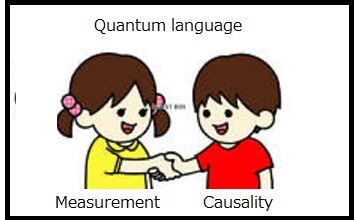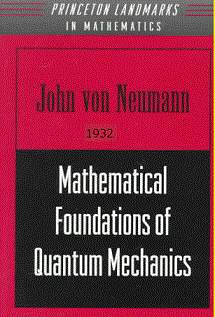Abstract of Chap. 2
Quantum language (= measurement theory ) is formulated as follows.
\[
\underset{\mbox{ (=quantum language)}}{\fbox{pure measurement theory (A)}}
:=
\underbrace{
\underset{\mbox{ (\(\S\)2.7)}}{
\overset{
[\mbox{ (pure) Axiom 1}]
}{\fbox{pure measurement}}
}
+
\underset{\mbox{ ( \(\S \)10.3)}}{
\overset{
[{\mbox{ Axiom 2}}]
}{\fbox{Causality}}
}
}_{\mbox{ a kind of incantation (a priori judgment)}}
+
\underbrace{
\underset{\mbox{
(\(\S\)3.1)
}}
{
\overset{
{}}{\fbox{Linguistic interpretation}}
}
}_{\mbox{ the manual on how to use spells}}
\]
That is, "measurement" and "causality" are closely related in quantum language:


| (A): | Describe every phenomenon modeled on Axioms 1 and 2 (by a hint of the linguistic interpretation)! |
Some may have a question that
This will be answered throughout this book. However, I add a brief answer below:
Recall Einstein's words:

The above "$\doteqdot$" cannot be replaced by "$=$" since von Neumann believed in that quantum mechanis is physics.
Again recall that, as mentioned in $\S$1.1, the main purpose of this book is to assert the following figure 1.1:

